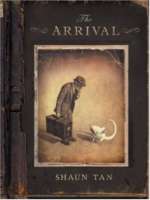by Marilyn Carpenter, Eastern Washington University
 One of the benefits of attending the IBBY conference was discovering new friends. It was a special delight to meet authors from other countries. The conversations we had during breaks, at lunch, at evening receptions and at dinner offered enriching ideas to take back to share with my students and colleagues. Devika Rangachari is an author from India who became a new friend. Attending her session and learning about her research regarding the role of women in Indian history was informative. She gave me one of her books, Harsha Vardhana.
One of the benefits of attending the IBBY conference was discovering new friends. It was a special delight to meet authors from other countries. The conversations we had during breaks, at lunch, at evening receptions and at dinner offered enriching ideas to take back to share with my students and colleagues. Devika Rangachari is an author from India who became a new friend. Attending her session and learning about her research regarding the role of women in Indian history was informative. She gave me one of her books, Harsha Vardhana.
Continue reading


 The IBBY Congress offered multiple opportunities for learning about the reading experiences offered to children in different parts of the world. One of those experiences that was the focus of lively discussions involved children reading wordless texts in the project, “Visual journeys: Understanding immigrant children’s responses to the visual image in contemporary picture books.” Dr. Evelyn Arizpe, from the University of Glasgow, coordinator of the project, Dr Cecilia Silva-Díaz and Brenda Bellorín, from the Universitat Autonoma de Barcelona, and myself from The University of Texas at Austin, shared the power of the visual image in the graphic novel
The IBBY Congress offered multiple opportunities for learning about the reading experiences offered to children in different parts of the world. One of those experiences that was the focus of lively discussions involved children reading wordless texts in the project, “Visual journeys: Understanding immigrant children’s responses to the visual image in contemporary picture books.” Dr. Evelyn Arizpe, from the University of Glasgow, coordinator of the project, Dr Cecilia Silva-Díaz and Brenda Bellorín, from the Universitat Autonoma de Barcelona, and myself from The University of Texas at Austin, shared the power of the visual image in the graphic novel  The realization that other young citizens of the global community have messages of empowerment, or agency, to share with children of the western world is perhaps one of the most important roles of international literature. The literature, in which the main characters reveal agency through identity, voice, decision-making, and taking action according to their learned perceptions of a situation, is one way to accomplish that exchange of ideas. That was one of the outcomes for individuals who attended the IBBY Congress last month as active participants in IBBY’s role of building bridges across global cultures.
The realization that other young citizens of the global community have messages of empowerment, or agency, to share with children of the western world is perhaps one of the most important roles of international literature. The literature, in which the main characters reveal agency through identity, voice, decision-making, and taking action according to their learned perceptions of a situation, is one way to accomplish that exchange of ideas. That was one of the outcomes for individuals who attended the IBBY Congress last month as active participants in IBBY’s role of building bridges across global cultures.